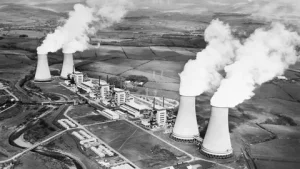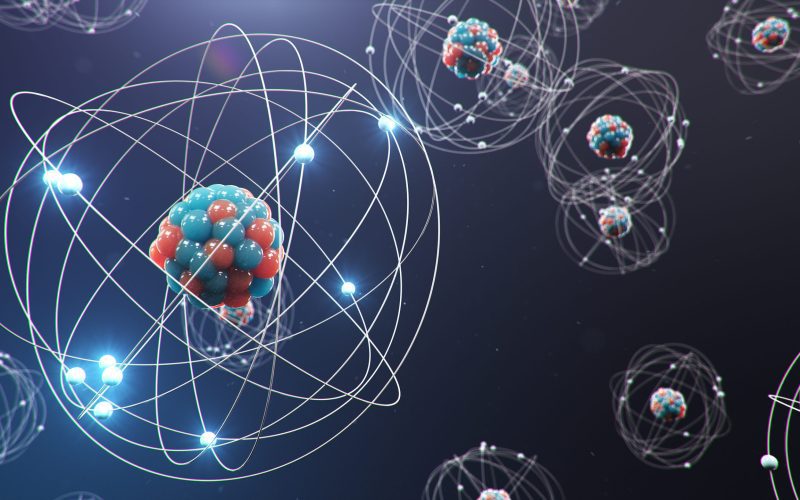Nuclear physics delves into the study of atomic nuclei, the very heart of matter. It explores the behavior of particles within the nucleus and the forces that bind them together. Understanding the intricacies of nuclear physics is crucial for various scientific and practical applications.
Structure of the Nucleus
Protons and Neutrons
At the core of every atom lies its nucleus, composed of positively charged protons and electrically neutral neutrons. The number of protons determines the element’s identity, while the sum of protons and neutrons dictates its mass.
Nuclear Forces
The forces that hold the nucleus together, known as nuclear forces, are among the strongest in nature. These forces counteract the electromagnetic repulsion between positively charged protons, ensuring the stability of the nucleus.
Isotopes and Isotones
Isotopes are atoms of the same element with different numbers of neutrons. Isotones, on the other hand, have the same number of neutrons but belong to different elements. Understanding isotopes and isotones is fundamental in various fields, including medicine and energy production.
Nuclear Reactions
Fusion and Fission
Nuclear reactions can release or absorb vast amounts of energy. Fusion combines lighter nuclei to form heavier ones, releasing energy in the process. Fission, on the contrary, involves splitting heavy nuclei into smaller fragments, also accompanied by energy release.
Energy Release
The energy released during nuclear reactions is immense and can be harnessed for various purposes, including electricity generation and propulsion in spacecraft.
Applications in Energy Production
Nuclear power plants utilize controlled nuclear reactions to generate electricity, providing a reliable and low-carbon alternative to fossil fuels.
Nuclear Medicine

Diagnostic Techniques
Nuclear physics plays a crucial role in medical imaging techniques such as positron emission tomography (PET) and single-photon emission computed tomography (SPECT), allowing for non-invasive diagnosis of diseases.
Therapeutic Applications
Radioactive isotopes are used in cancer treatment through techniques like radiation therapy, targeting and destroying cancerous cells while minimizing damage to healthy tissue.
Nuclear Astrophysics
Role of Nuclei in Stars
Stars are cosmic furnaces where nuclear fusion reactions occur, converting hydrogen into helium and releasing energy in the form of light and heat. The study of stellar nucleosynthesis provides insights into the universe’s evolution.
Stellar Nucleosynthesis
Elements heavier than hydrogen and helium are formed through nuclear reactions in stars, enriching the cosmos with diverse elements essential for the emergence of life.
Nuclear Safety and Security
Challenges and Precautions
While nuclear technology offers immense benefits, it also poses significant risks, including the potential for accidents and the proliferation of nuclear weapons. Strict safety measures and international cooperation are essential to mitigate these risks.
Non-proliferation Efforts
Efforts to prevent the spread of nuclear weapons include diplomatic agreements, arms control treaties, and disarmament initiatives aimed at reducing global nuclear arsenals.
Future Directions in Nuclear Physics
Advancements in Research
Ongoing research in nuclear physics continues to push the boundaries of our understanding, leading to breakthroughs in fields such as particle accelerators, nuclear fusion, and quantum computing.
Potential Applications
The insights gained from nuclear physics have the potential to revolutionize various industries, from healthcare and energy to materials science and environmental remediation.
Conclusion
Nuclear physics unlocks the secrets of the nucleus, revealing the immense power and potential contained within. From energy production and medical diagnostics to unraveling the mysteries of the cosmos, the applications of nuclear physics are far-reaching and profound.
FAQs
How do nuclear reactors generate electricity?
Nuclear reactors use controlled nuclear fission reactions to heat water, producing steam that drives turbines connected to generators, ultimately generating electricity.
What are the risks associated with nuclear power plants?
Risks include the potential for accidents, such as meltdowns or radioactive leaks, as well as the long-term storage and disposal of radioactive waste.
Can nuclear energy help combat climate change?
Yes, nuclear energy is a low-carbon alternative to fossil fuels, providing a reliable source of electricity without emitting greenhouse gases.
How does nuclear medicine benefit patients?
Nuclear medicine techniques allow for early diagnosis and precise treatment of various medical conditions, improving patient outcomes and quality of life.
What is the future of nuclear fusion technology?
While still in the research and development stage, nuclear fusion holds promise as a clean and virtually limitless source of energy, but significant technical challenges remain to be overcome.












